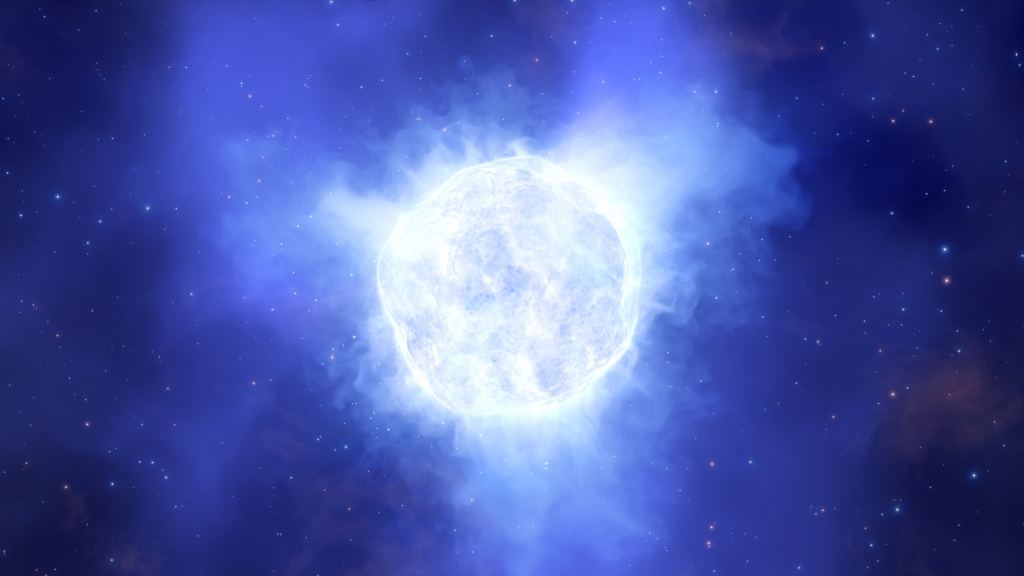
The great stars have violent deaths. As they run out of hydrogen to merge, the weight of the star squeezes its core to make it hotter and denser. The star fuses heavier elements together in one last effort to avoid collapse. Carbon to silicon to iron, each step generates heat and pressure. But soon it is not enough. The fusion of even heavier elements does not give the star more energy, and the core quickly collapses. The protons and neutrons in the nuclei collide so violently that the resulting shock wave tears the star apart. The outer layers of the star shoot outward, turning into a bright supernova. For a brief time, the star shines brighter than its entire galaxy, and its core collapses into a neutron star or black hole. All large stars were thought to end with a supernova, but new research finds that may not be the case.

The evidence comes from a galaxy 75 million light years away known as the Kinman dwarf galaxy. Between 2001 and 2011, various groups of astronomers studied the spectra of this galaxy because it has a particularly low metallicity. Because the galaxy is small and very far away, astronomers cannot see all the individual stars, but galactic spectra allow them to identify some of the bright stars using particular emission lines. One of them was a luminous blue variable star.
Blue Luminous Variables (LBV) are very large stars on their senior days. They have quiet, active periods and can shine 2.5 million times more than the Sun. LBV’s bright emission lines are unusual for a blue giant star, making them easy to identify. Since astronomers saw these lines in the spectra of the Kinman dwarf galaxy, they knew that the galaxy contained such a star.

But when new spectra measurements were taken from the Kinman dwarf galaxy in 2019, the LBV spectral lines disappeared. They had simply disappeared as if the star was not there. It seemed that the star had disappeared. But giant blue stars don’t just disappear. They must explode like a supernova before fading away. This particular star did not turn into a supernova, so something strange is happening.

Since astronomers have not observed the star directly, it is possible that the star has become a supernova and has been overlooked. But that is highly unlikely. The Kinman dwarf galaxy is regularly observed, and a supernova would be difficult to lose. The star is more likely to fade from view, and the authors of this latest research have a few ideas about why.
One idea is that the star has entered a particularly quiet stage at the same time that it is obscured by dust in the galaxy. But a second idea is more interesting. Perhaps the star experienced an unusual core collapse, forming a black hole without undergoing a supernova. It has been debated whether this is possible, and this new work could be evidence to support the idea.
But this is only one star and not even one that was directly photographed. It will take much more work to determine what really happened.
Reference: Allan, Andrew P. et al. “The possible disappearance of a massive star in the low-metallicity galaxy PHL 293B”. Monthly notices from the Royal Astronomical Society 496.2 (2020): 1902-1908.